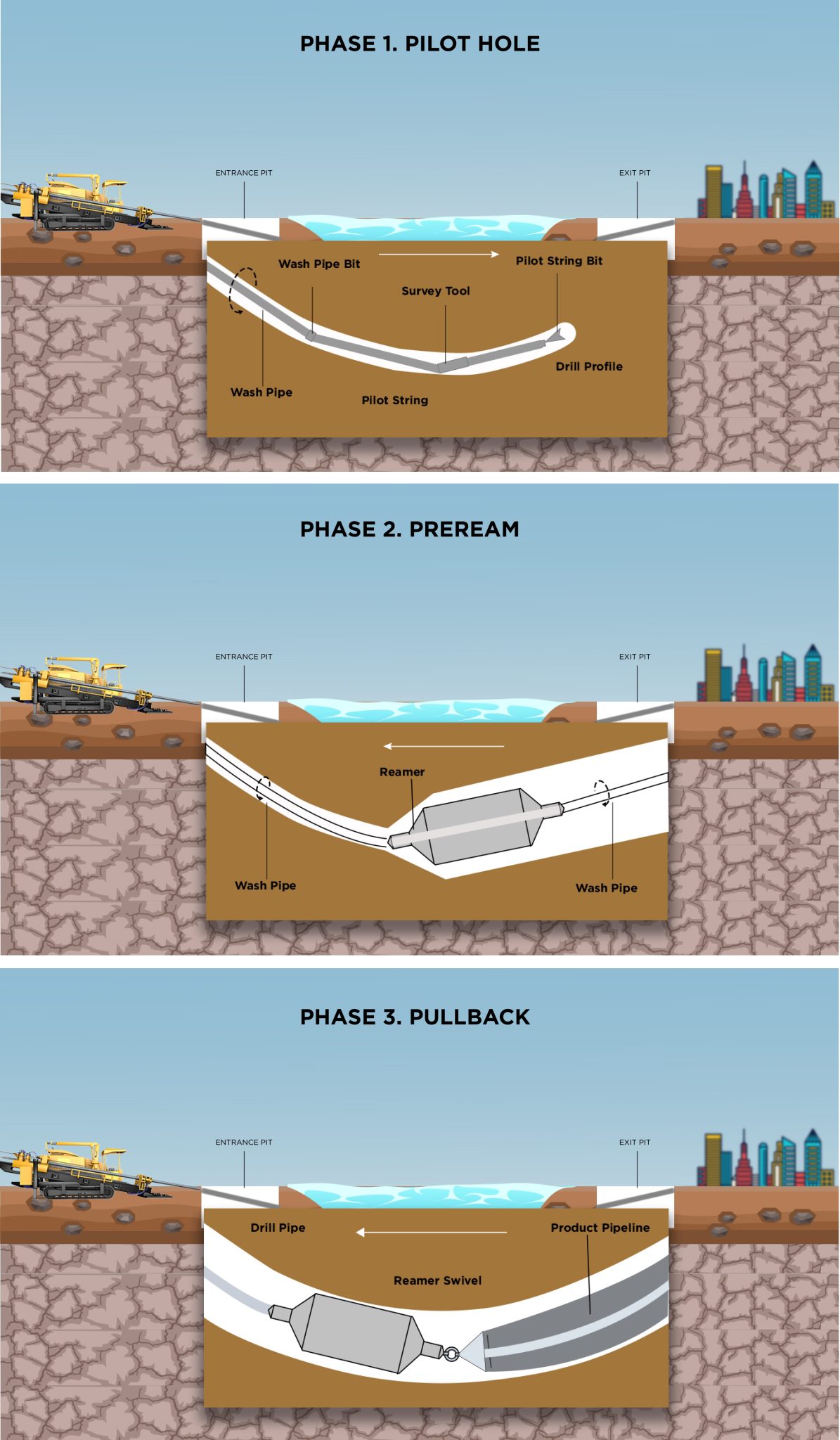The exciting Intersection of Innovation and Directional Boring Techniques

Directional drilling has revolutionized the manner we navigate the underground landscape, allowing engineers and geologists to access resources and place utilities with unprecedented precision. This innovative technique enables drilling not only in a vertical manner but also in a horizontal manner, thus considerably enhancing the productivity of operations in various industries. As cities develop and the demand for energy and utilities grows, grasping the intricacies of directional drilling becomes essential for experts and novices alike.
In this exploration of directional drilling, we will explore its development, the technologies that support it, and the countless applications that highlight its significance in fields such as oil and gas, sustainable energy, and urban development. From reducing surface impact to overcoming the difficulties of tough landscapes, directional drilling is at the leading edge of modern engineering solutions. Whether you are looking to learn the basics or seeking insight into future innovations and progress, this guide will provide a thorough insight of what makes directional drilling a foundation of contemporary infrastructure projects.
# Grasping Orientation Drilling
Orientation drilling stands as a technique enabling operators to tap into oil, gas, and other resources located under the terrestrial surface while reducing environmental footprint. In contrast to conventional vertical boring, orientation drilling enables technicians to establish inclined boreholes able to access various objectives from a solitary site . Such technique not only optimizes resource extraction but also reduces the total surface locations necessary for boring tasks , making it especially beneficial in urban and sensitive areas .
This procedure begins with thorough planning , where engineers identify the best boring trajectory according to subsurface data and project requirements . Angular boring uses cutting-edge tech, including tailored boring apparatus and instantaneous monitoring technology, to ensure precision and effectiveness . This feature is essential in maneuvering through complicated geological formations and steering clear of barriers, like pre-existing services or environmentally sensitive sites .
As the industry progresses, orientation drilling has turned into an indispensable part of multiple sectors , namely hydrocarbon utilities , and sustainable resources. This flexibility enables its use in applications extending from under-river installations to the creation of geothermal energy projects . The ongoing progress in technology , in along with increasing sustainability efforts, continually push the boundaries of the potential of angular drilling , positioning it as a key practice for current infrastructure advancement.
Benefits of Directional Boring
Directional drilling offers numerous advantages over conventional drilling methods, primarily due to its capability to drill in various directions rather than just upward. This flexibility allows for the drilling of wells from a single point, minimizing the need for several setups and reducing the overall footprint of drilling operations. By accessing multiple targets through less drilling sites, companies can considerably cut down on environmental disruption while maximizing resource extraction.
Another significant advantage, horizontal drilling is its effectiveness in metropolitan and sensitive locations. This technique is particularly useful when maneuvering around existing structures, such as construction, highways, and other infrastructures. By drilling sideways under https://gmaccontractors.com/ , companies can finish projects with little surface disruption, allowing for speedier installations and diminishing the need for large-scale excavation. This ability is essential in highly populated areas where conventional drilling would face many logistical challenges.
Additionally, directional drilling can lead to substantial cost savings. By lowering time on site and minimizing the amount of material and labor needed, firms can increase their bottom line. The capability to reach deeper reserves of oil, natural gas, or other resources that are not accessible through vertical drilling adds to the economic profitability of projects. Overall, these benefits make directional drilling an increasingly preferred choice in various sectors, demonstrating its importance in contemporary drilling practices.
Future Innovations in Directional Drilling
As the sector advances, the incorporation of machine intelligence and automation is reshaping the arena of guided drilling. These systems enhance boring accuracy by analyzing live information, refining drill paths, and predicting potential challenges before they happen. The ability to make prompt adjustments based on thorough analytics not only accelerates operations but also significantly reduces downtime and expenses associated with unforeseen challenges.
Moreover, developments in software and monitoring technologies are creating a more cohesive approach to horizontal boring. The use of automated tools enables enhanced planning and execution of boring projects by providing accurate subsurface knowledge and live feedback. Managers can track conditions from afar, allowing for faster decision-making processes that enhance overall initiative efficiency. This electronic shift ensures that drilling procedures can be fine-tuned through insightful insights, leading to enhanced performance and sustainability.
Finally, the change towards green infrastructure continues to influence guided boring practices. With increasing interest for environmentally conscious approaches, companies are focusing on new ideas that reduce ecological impact while delivering successful outcomes. Practices such as drilling fluid recycling and the use of biodegradable drilling fluids are being embraced to further diminish ecological harm. This focus not only aligns with global eco-consciousness goals but also establishes directional boring as a vital component in the shift towards cleaner energy endeavors.

